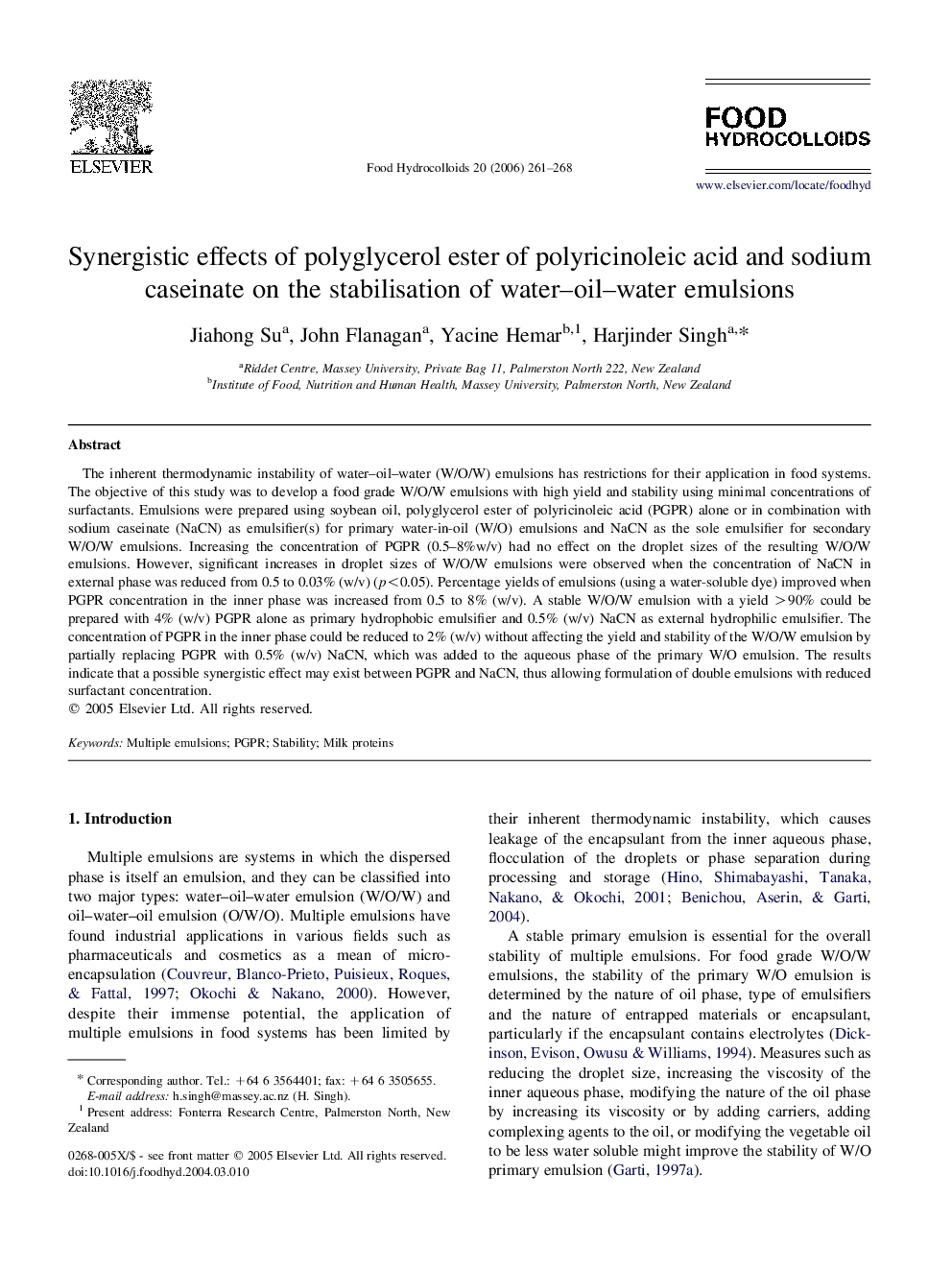| Article ID | Journal | Published Year | Pages | File Type |
|---|---|---|---|---|
| 606055 | Food Hydrocolloids | 2006 | 8 Pages |
The inherent thermodynamic instability of water–oil–water (W/O/W) emulsions has restrictions for their application in food systems. The objective of this study was to develop a food grade W/O/W emulsions with high yield and stability using minimal concentrations of surfactants. Emulsions were prepared using soybean oil, polyglycerol ester of polyricinoleic acid (PGPR) alone or in combination with sodium caseinate (NaCN) as emulsifier(s) for primary water-in-oil (W/O) emulsions and NaCN as the sole emulsifier for secondary W/O/W emulsions. Increasing the concentration of PGPR (0.5–8%w/v) had no effect on the droplet sizes of the resulting W/O/W emulsions. However, significant increases in droplet sizes of W/O/W emulsions were observed when the concentration of NaCN in external phase was reduced from 0.5 to 0.03% (w/v) (p<0.05). Percentage yields of emulsions (using a water-soluble dye) improved when PGPR concentration in the inner phase was increased from 0.5 to 8% (w/v). A stable W/O/W emulsion with a yield >90% could be prepared with 4% (w/v) PGPR alone as primary hydrophobic emulsifier and 0.5% (w/v) NaCN as external hydrophilic emulsifier. The concentration of PGPR in the inner phase could be reduced to 2% (w/v) without affecting the yield and stability of the W/O/W emulsion by partially replacing PGPR with 0.5% (w/v) NaCN, which was added to the aqueous phase of the primary W/O emulsion. The results indicate that a possible synergistic effect may exist between PGPR and NaCN, thus allowing formulation of double emulsions with reduced surfactant concentration.
